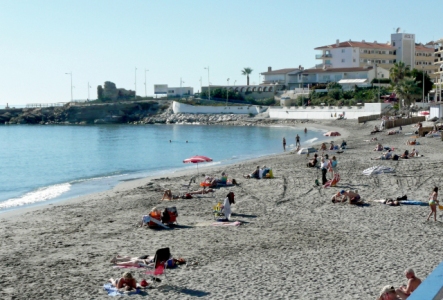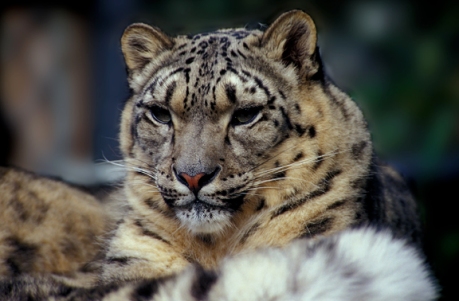This is my last post for this week. I’m aiming for 3 per week but will settle for two.
Anyone doing a blog for non-commercial reasons has to answer a few questions. These include, “why am I doing this?” “What size/kind of audience do I want – if any?” “How much time/energy is it consuming which could be spent in other (better?) ways?” “Are there other positive spin-offs which balance the negative?”
My answers, in brief’, to the first question are: firstly, to help discipline myself to undertake certain tasks which would otherwise be neglected; secondly, to derive feedback from readers or, more broadly, to communicate with family and friends while at the same time widening my circle of communication; thirdly, to help polish my writing and, by the very act of preparing the blog, to compel me to read more widely and think more intensely. And, most simply, because I enjoy the act of communication.
The answers to the other questions to a considerable extent depend on how well I am accomplishing what I set out to do and will become apparent only over time. If you are enjoying any aspect of this blog, you will help me considerably by SUBSCRIBING AND COMMENTING. This you can do on the blog itself, and it would save me the additional task of sending out periodic reminders to my busy circle.
I wanted to use this post to finish my third chapter on our recent trip to Spain – only one more after that. But before we go to Spain a couple of “must reads” from the wider world. I promise you this is a small selection, and not necessarily the best. I consider the Internet a form of travel – of the armchair variety – but a wonderful way of keeping in contact with the wider world. The only costs are a tendency towards obesity, osteoporosis, bad eyes and worse posture and misanthropy – surely a small price to pay for all that fun!
Firstly, a wonderful essay on Stefan Zweig, somebody of whom most of us have heard but few of us (I suspect) have read. 

 Here is short extract from the essay; if reading the original doesn’t make you want to read Zweig himself, nothing will: “The word that keeps coming back is fluent. Stefan Zweig was born fluent. Fluent in everything. Everything seemed to come easily to him. Born in 1881 into a very wealthy, open-minded Viennese Jewish family, he lived well and traveled widely; published at a very early age; finished his dissertation at an equally precocious age; acquired unparalleled international fame as a biographer, novelist, playwright, essayist, and librettist; and had a roster of friends and acquaintances so exhaustive that it is difficult to think of any European worthy of notice in the early decades of the past century whose biography would not at one point or another invoke the name of Stefan Zweig.”
Here is short extract from the essay; if reading the original doesn’t make you want to read Zweig himself, nothing will: “The word that keeps coming back is fluent. Stefan Zweig was born fluent. Fluent in everything. Everything seemed to come easily to him. Born in 1881 into a very wealthy, open-minded Viennese Jewish family, he lived well and traveled widely; published at a very early age; finished his dissertation at an equally precocious age; acquired unparalleled international fame as a biographer, novelist, playwright, essayist, and librettist; and had a roster of friends and acquaintances so exhaustive that it is difficult to think of any European worthy of notice in the early decades of the past century whose biography would not at one point or another invoke the name of Stefan Zweig.”
Here’s something from Culturelab, a blog on the New Scientist: “State-of-the-art neuro-imaging and cognitive neuropsychology both uphold the idea that we create our “selves” through narrative. Based on a half-century’s research on “split-brain” patients, neuroscientist Michael Gazzaniga argues that the human brain’s left hemisphere is specialised for intelligent behaviour and hypothesis formation. It also possesses the unique capacity to interpret – that is, narrate – behaviours and emotional states initiated by either hemisphere. Not surprisingly, the left hemisphere is also the language hemisphere, with specialised cortical regions for producing, interpreting and understanding speech. It is also the hemisphere that produces narratives.“This represents advances in cognitive and social neuroscience – a hot and fascinating transdisciplinary field.
And now for one of the funniest videos I’ve seen for a long time, go to Dawkins reading his hate mail.
And here is a lovely essay on one small but fascinating corner of modern physics which I’ve entitled “Blacker than Black“. And, finally, Jargon in Science Writing:
“If all of this seems unnecessarily simple, remember that the average reading age of even in a developed country like the UK is around the level of a schoolchild. Go beyond that, and you risk perpetuating an online inequality where only the most educated people can understand the majority of what’s being said. My working hypothesis (and I’d love to see some actual data on this) is that 90% of science blogs can be understood by no more than 10% of people.”
Now for SPAIN again: The coast of Southern Spain is lined by a band of mountains, highly folded and softened by erosion, to create a very attractive topography. It is littered with whitewashed villages, much like Almachar where we stayed, but of varying degrees of sophistication and wealth. Others, especially those closer to the sea, are actually towns, sometimes with older sections much like our village, and modern developments and shopping areas. Different members of our party visited one of these, Velez-Malaga, a few times and picked up some excellent shoes for Greg and Laura and Spainish dresses for the kids – which transported Thandeka and Jessica into an ecstasy of delight
According to Google Earth, “The municipality forms part of the Costa del Sol region. Vélez-Málaga itself is a market city, 4 km inland from Torre del Mar but unlike the coastal resort not dominated by the tourist industry.” We visited one of the coastal towns (it may have been Torre del Mar) and swam in the surprisingly chilly but very calm Mediterranean – and thoroughly enjoyed ourselves.
(More pics to be found in Flickr.) We also visited Malaga itself, the major town of the region. Picasso was born there (nobody knew that apparently, or you didn’t read my last post attentively!) and of course it has a museum devoted to his early life. We visited the excellent roofed market and had a most enjoyable meal on the pavement, very attentively looked after by a bevy of waiters. But my ear infection took a lot of the gloss off the experience.
Over the course of the week we visited both Granada and Cordoba.
The route to Granada took us through impressive but very twisty mountain roads. All 10 of us were in the Mercedes and at least half felt very queasy indeed. Dropping down into the Andalusian plains, brought with it considerable pollution and mediocre architecture, but the cities themselves were well worth a visit. We couldn’t get into the Alhambra in Granada but managed to see the Generalife gardens which were quite magnificent.
Moorish gardens of the time are justly famous and represent an enormous cultural contribution to mankind. I could not help imagining that places like this provided the backdrop to 11th century Persian poetry and letters.
Cordoba is, of course, an historical and architectural wonderland, somewhat overrun in places by tourists and their more unsightly trappings. Nevertheless, the Gardens of Alcazar, the Great Mosque/Cathedral of Cordoba and the tiny, but intricate, synagogue in the Jewish Quarter were all fascinating in their different ways. A comparison of the synagogue with the Moslem and Christian buildings graphically illustrates the differences in worldly power and orientation of the 3 religions.
I have put most of the pictures on Flickr – see righthand column – but here are the links for more detail on Granada and Cordoba















